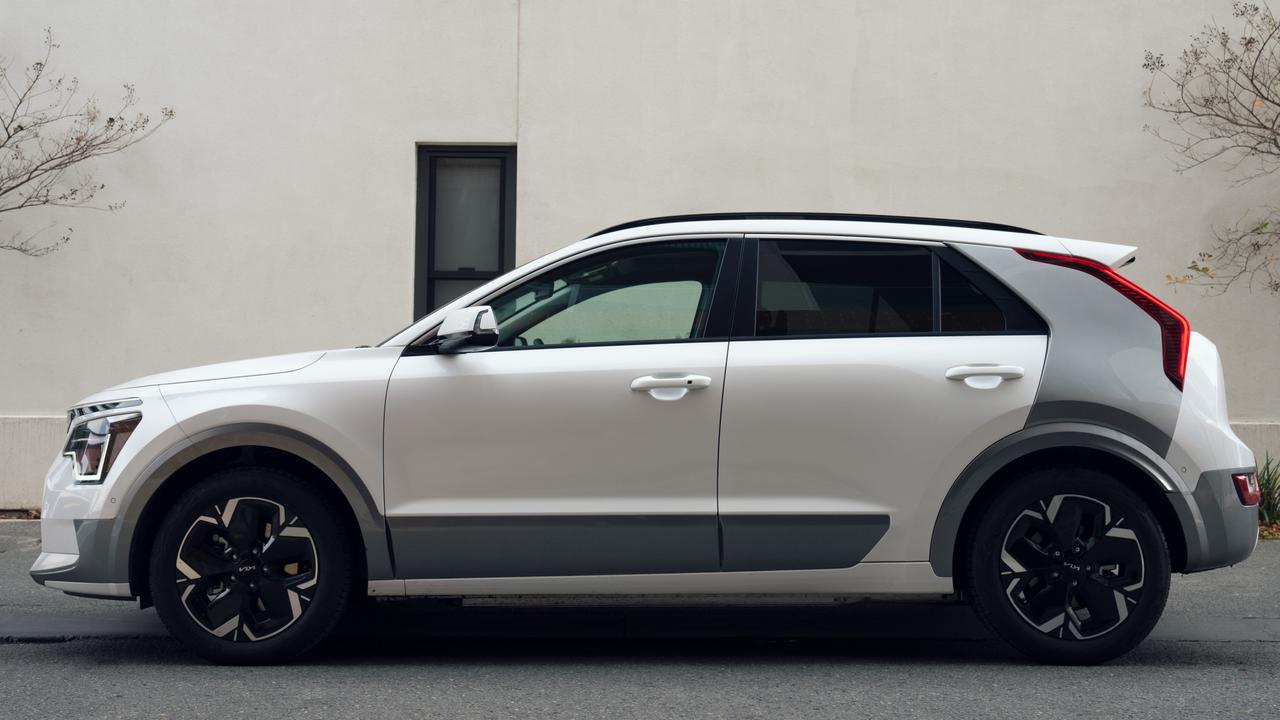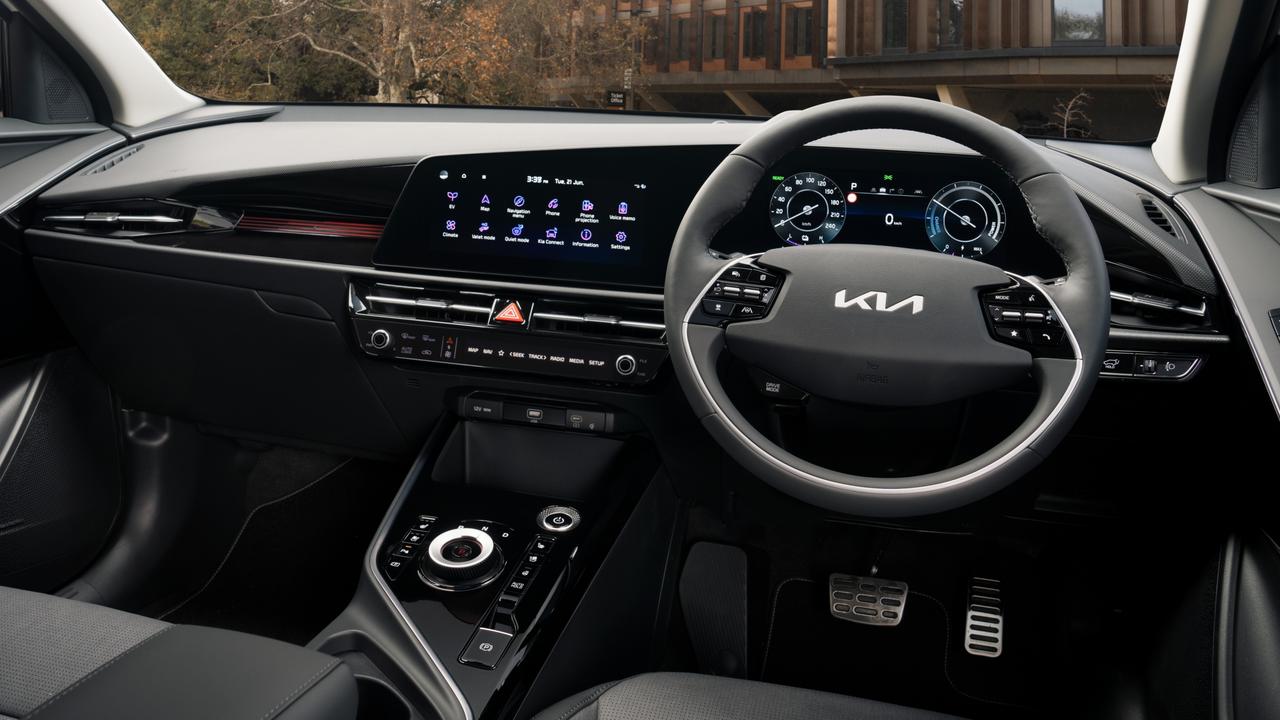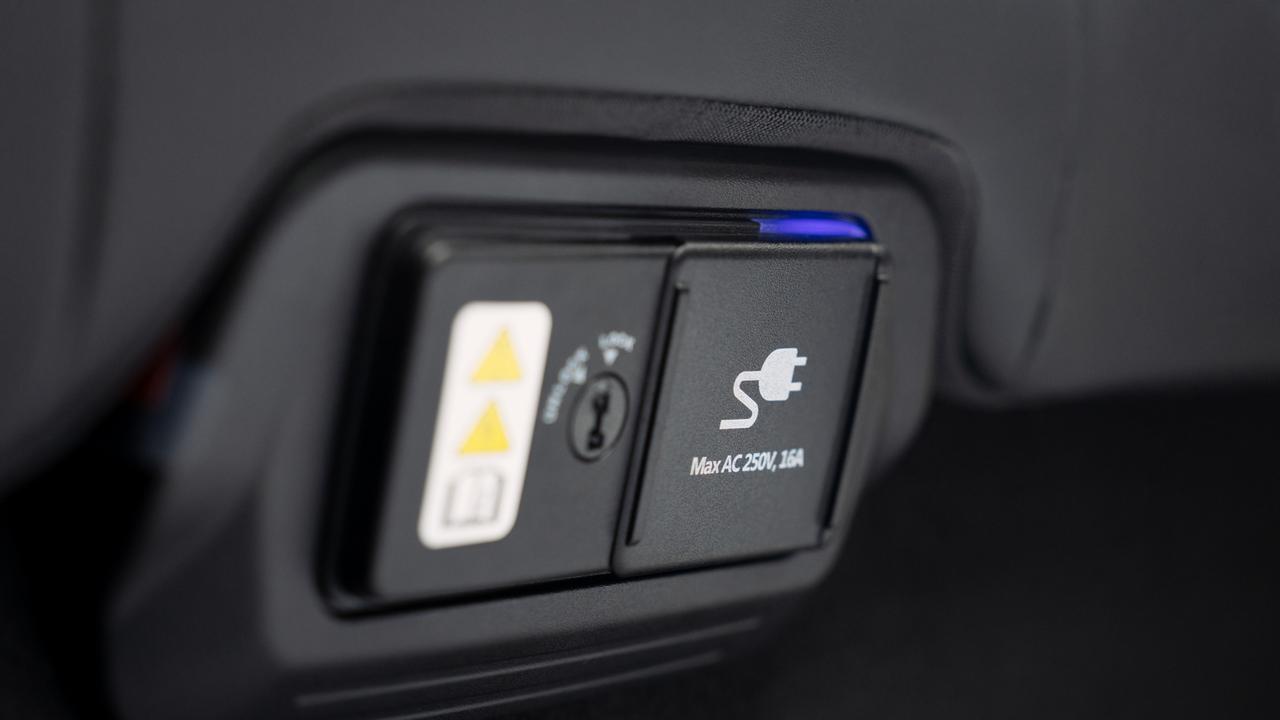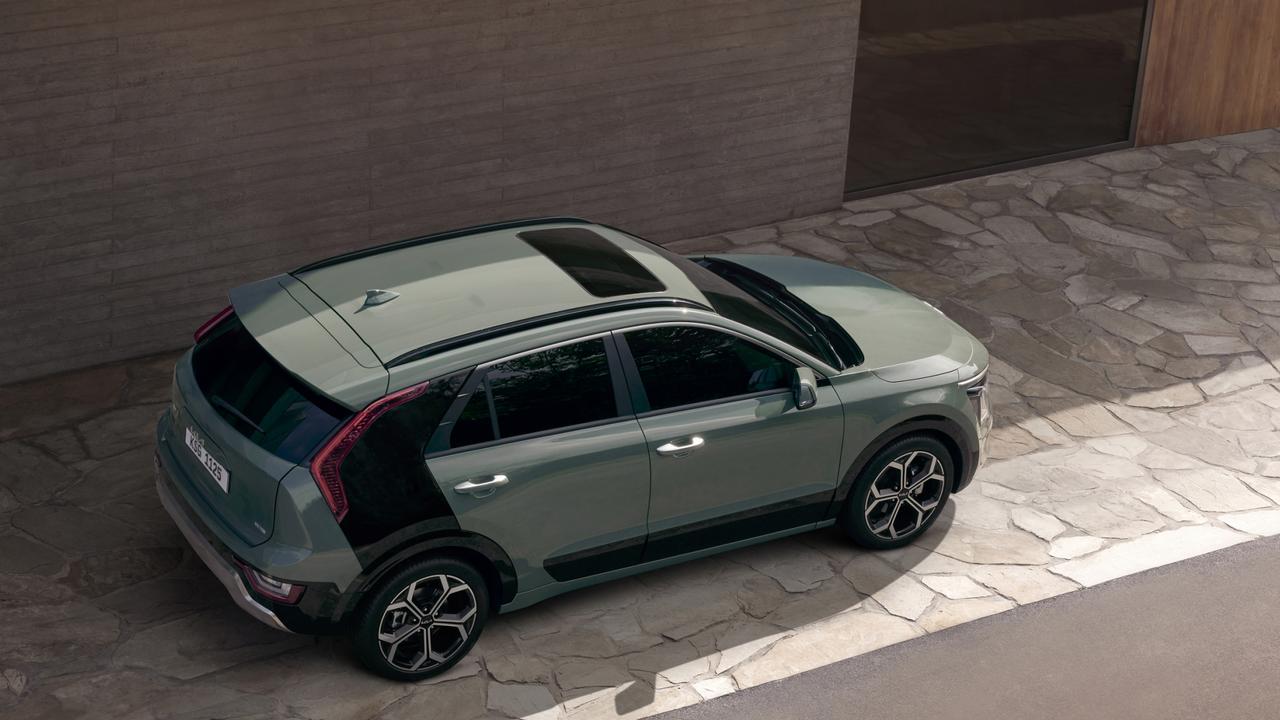Kia Niro EV GT-Line review finds improved performance means a bigger investment
The first Kia Niro was below par, but the new model is worthy of consideration for those considering an EV. If the price stacks up.
Lifestyle
Don't miss out on the headlines from Lifestyle. Followed categories will be added to My News.
Forums love an electric vehicle debate. Sales of EVs have skyrocketed in the past
year and the arrival of sub-$40,000 are propelling the popularity.
Yet for many, the future remains grim. Fire hazards. Lack of infrastructure. Anti-China sentiment. Battery recycling.
You could guarantee all those issues and more would be central to the debate every time the subject is raised in any online discussion forum.
Kia has been riding a steady sales incline during recent years off the back of good looking products, reliable performance and a seven-year warranty.
The South Korean brand’s foray into EV world struggled initially with the Niro, but has since delivered one of the best on the market with the EV6.
The Niro has now been updated – improvements were required to meet market expectations. It’s available with hybrid or full electric drivetrains, in two equipment levels. Our family tested the EV in top-shelf GT-Line specification.

WHAT WERE YOUR FIRST IMPRESSIONS?
KEL: Awesome lines and a refined shape, it immediately shouted personality.
GRANT: The contrasting c-pillar colour added some serious
external pop, along with the boomerang-shaped LED tail-lights.
KEL: Compact on the outside, the cabin was more spacious than I expected.
GRANT: Electric vehicle platforms are awesome for designers as they don’t have the same mechanical requirements which enables greater internal freedom. The Niro would certainly be suitable for a growing family with a range of about 460km.
KEL: There was a familiar feel to the operations found in the Sorento SUV, but it wasn’t as flashy. I would guess the Niro could appeal to those unable to afford the larger EV6, which I loved.
GRANT: Well, it could be a tough sell. The Niro hybrid version returns fuel consumption figures of about four litres for every 100km and starts from about $48,500. To get the same specification as the car we drove you’d be looking at $54,350, but for the EV it’s close to a $22k premium.
KEL: Electric vehicles have been more expensive and I know there are rebates available, but $76,000 for a compact crossover would challenge a lot of budgets.
GRANT: You can also get Kia’s base model EV6 Air for similar money. Meanwhile, we’ve also recently seen an influx of Chinese EV imports BYD and MG for about $40,000.

WHAT DID YOU LOVE?
KEL: Easy connectivity and operations are at the forefront when getting into a car. While it may not be the flashiest cabin around, Kia does this well and it’s brilliant to be able to just plug in your phone and everything works fast without fuss.
GRANT: Wireless Apple CarPlay and Android Auto are part of the deal so you don’t even need to be plugged in for smartphone mirroring. The two 10.25-inch screens (one for the driver and the other central on the dash) appear to blend together to create an ultra modern feel, along with the rotary dial which shifts between drive, neutral and reverse.
KEL: The seating position was excellent with good all-round vision, and the chunky steering wheel feels great in your hands.
GRANT: One new inclusion is Kia Connect which is functionality we’re starting to see among various manufacturers. It enables the owner to use an app on their phone to remotely lock or unlock the car, activate the climate control, send a destination to the sat-nav in preparation for travel, monitor its location and provide alerts if the car travels outside specified geographical areas (perfect to keep an eye on young drivers).

WHAT DID YOU LOATHE?
KEL: Parking sensors front and back were great, but I love the bird’s eye view for parking to ensure I’m in the middle of the lines. That was absent.
GRANT: My constant issue with the Kia minimalist cabin design is the requirement to switch between infotainment and aircon controls on the dash. It’s only one button, but it’s an extra step each time.
KEL: I like the cabin functionality, but the colour palette is dark. It’s super cool how you can choose between more than 60 interior lighting colours yet it’s not showcased during daylight hours.
GRANT: One issue for many would be the absence of a spare tyre. There was massive boot space, as good as many medium-size SUVs, but if you get a flat there’s only a repair kit to get you to safety.

HOW WAS THE DRIVE?
KEL: Brisk without being super quick, I found the Niro responsive off the line and easy in various conditions.
GRANT: The old-school 0-100km/h time is 7.8 seconds. That’s reasonable although not quick in comparison to some EVs, which are around five. With a well-weighted steering feel and comfortable ride, it fits the remit of a confident family machine.
KEL: Some EVs have large turning circles but the Niro was good and I had no issues in tight spaces.
GRANT: During the pandemic Kia Australia’s local tuning arm had little input with the suspension and ride changes, but things changed back to normal with the Niro and it’s discernible. The energy consumption was nearly exactly as claimed by Kia, at just over 16kWh/100km, and using a standard power point at home would take it from 10-100 per cent in about 27.5 hours. Find a DC fast charger and it can do a similar job in 43 minutes.

WOULD YOU BUY ONE?
KEL: Great dimensions and a fun drive, the only stumbling block for me would be the price. I’d think something closer to $60,000 would make it more attractive in a competitive market.
GRANT: For my money, I’d get in line for an EV6 Air. There is nothing wrong with the Niro in terms of performance or space, I’m just smitten with the EV6 styling and I’d take the lower-spec model for the same coin.









